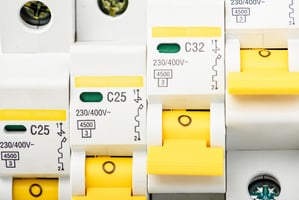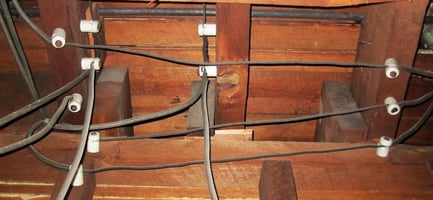Electrical safety might not be the most glamorous or exciting subject, but it's one that's vital...
The Fascinating History of Home Electrical Safety
 Electricity is something we rely on every day without giving it much thought. Flip a light switch, charge your phone, run the dishwasher; it all just works. But that convenience didn’t happen by accident. It took over a hundred years of trial, error, and smarter standards to make electricity as safe and dependable as it is now.
Electricity is something we rely on every day without giving it much thought. Flip a light switch, charge your phone, run the dishwasher; it all just works. But that convenience didn’t happen by accident. It took over a hundred years of trial, error, and smarter standards to make electricity as safe and dependable as it is now.
The Early Days: Electricity Without Standards
Electricity was still new to most households in the late 1800s and early 1900s. A few homes had it, but there were no rules for how to install or use it safely. Wires were left exposed, insulation wasn’t reliable, and nobody really knew what was too much power for a home to handle.
Mistakes were common, and sometimes tragic. Fatal shocks and sporadic fires weren’t unusual, and that led to a growing call for real safety guidelines.
Putting Necessary Standards Into Place
By 1897, the first National Electrical Code (NEC) was published. It laid the groundwork for a safer way to bring electricity into homes. Groups like the National Fire Protection Association (NFPA) and the American Institute of Electrical Engineers (AIEE) stepped in to help shape the early rules.
As electricity became more popular, it became clear that trained electricians were key. They knew how to follow the new standards and help homeowners stay safe.
The Rise of Modern Safety Features
Throughout the 20th century, electrical safety kept improving. Grounding wires helped steer extra current away from appliances and people. Circuit breakers made it easier to stop the flow of electricity when there was a problem.
Then came GFCIs and AFCIs: small devices with a big impact. These have the ability to shut off power automatically when a shock hazard or an arc fault is detected. That was a huge step forward in preventing injuries and home fires.
Today’s Electrical Systems: Built for Peace of Mind
These days, most homes are packed with devices. From laptops and chargers to smart fridges and security systems, we count on our electrical systems to keep up. Fortunately, modern homes are built with safety in mind. Features like tamper-resistant outlets, updated breaker panels, and whole-home surge protection are now available to all homeowners.
The NEC gets a refresh every three years, so electricians always have up-to-date guidance. That means when you hire a licensed professional electrician, you can rest assured they are following the latest safety standards.
Why It Matters: What History Teaches Homeowners
Looking back at how far we’ve come highlights one important fact: electrical safety is never a one-and-done deal. Systems age, standards evolve, and regular electrical inspections are the best way to stay ahead of problems.
In D.C., many homes were built before many of today’s rules even existed. If yours hasn’t been checked out in a while, or if you’re not sure what kind of wiring or panel your home has in place, it might be time to take a fresh look.
Looking for a Trusted Expert? Wilcox Electric Is Here to Help
Wilcox Electric has been helping homeowners in the D.C. area maintain their electrical needs since 1989. We know how to work with both historic homes and modern builds, and our team focuses on safety, reliability, and smart upgrades.
If it’s time for a professional electrical inspection, we’re here to help. Schedule a visit with Wilcox Electric and get peace of mind that your electrical system is safe, updated, and built to last.




